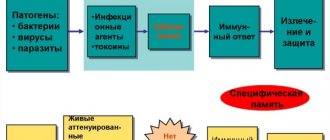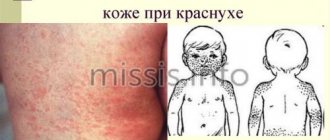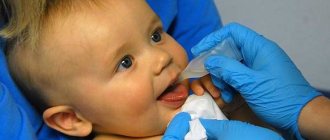An unvaccinated child and polio vaccination - can he become infected from a vaccinated child with a live vaccine?
Childhood vaccination is a hot topic, especially for parents. Polio vaccination raises many questions. This most dangerous disease of the nervous system often ends in peripheral paralysis. Therefore, polio vaccination is now included in the vaccination schedule.
Immunization is carried out with 2 types of polio drugs in several stages: first with an inactivated vaccine, then with a live one. And this last vaccination scares parents the most: what if the child gets infected with polio from the vaccinated person? Is it possible? Let's figure it out.
Are live vaccine drops dangerous?
So, to combat polio, 2 types of drugs have been created and are still used to this day.
This is an inactivated vaccine containing “killed” poliovirus, administered intramuscularly (also known as IPV). And an oral vaccine consisting of live attenuated viruses (known as OPV) that is dropped into the mouth. It includes strains grown in such a way that their neurovirulence (pathogenicity) is significantly reduced, that is, they are not capable of causing disease.
Once inside, OPV completely imitates the normal entry of pathogen cells into the body. It protects the gastrointestinal tract from infection, preventing viral replication, and therefore the release of pathogenic microorganisms in feces.
But OPV also has a disadvantage - viruses can regain their neurovirulent qualities (for example, if a child suffers from immunodeficiency or pathology of the digestive system), which can cause vaccine-associated paralytic poliomyelitis (VAPP) to develop. And this already threatens an unvaccinated person with infection upon contact with a sick person.
Live polio vaccine and an unvaccinated child: is there a risk of infection?
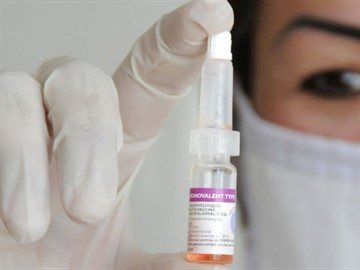
VAPP is diagnosed very rarely - one case per 500,000 - 2,000,000 doses. And this happens after the first injection. It has been established that with the second vaccination the frequency of this phenomenon is much less, and with the third it almost never occurs.
The chances of a healthy child getting infected from an injection are negligible. But is it possible to catch polio from someone who has already been vaccinated? Yes, theoretically.
Unvaccinated people suffering from immunodeficiency, pregnant women, and infants with pathologies of the immune system are susceptible to this threat. Therefore, caution should be exercised. In addition, if there are several children in a family, and one has already been vaccinated with OPV, then others who are not vaccinated may become infected with VAPP. It is transmitted through food or household contact.
After the OPV procedure, the virus exists in the child’s intestines for about two months. That is why parents are warned that if their child has just been vaccinated, he is prohibited from attending kindergartens during the above-mentioned period.
Remember that viral shedding in children is extremely low, and during transmission, the volume of pathogenic particles decreases several times.
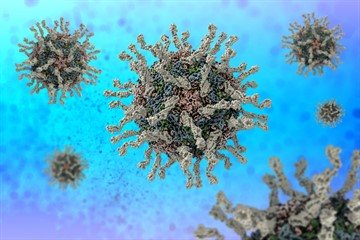
This means that if a child contracts vaccine-associated polio, this is not a reason to panic. As a rule, this infection passes in a mild form, without causing complications.
And yet, can a child infect others after being vaccinated against polio? Such cases are very rare and almost never observed in life. This is why it is important to understand the need for immunization. This is the only way to be sure that the virus will not affect anyone.
The need for quarantine after vaccination
Quarantine is really necessary for a child who has been immunized against polio. Any doctor will confirm this. This procedure is necessary to avoid infecting other unvaccinated children with VAPP. Such a child is quarantined for 60 days.
What should you do if an unvaccinated child came into contact with someone vaccinated against polio?
You need to understand that only virulent viruses pose a danger, and in order to become such, they must undergo a mutation in the intestines of the vaccinated person . This is possible if a person has a serious immunodeficiency, which in itself is a rare case.
Therefore, usually a vaccinated baby releases unchanged (non-dangerous) viruses in much smaller quantities (passive immunization) than they were injected with during immunization. That is, those around you who have received such a small dose simply maintain the tension of the immune system in the team.
This is the purpose of OPV vaccination. But even if we assume that an unvaccinated baby still managed to catch a virulent virus (that is, he also has severe immunodeficiency), the probability of contracting polio is only 5% (or less).
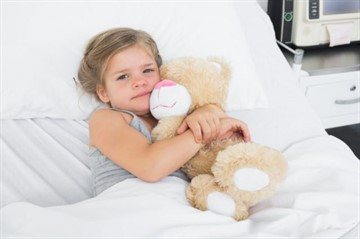
But, even if included in these statistics (which is absolutely incredible), the child is unlikely to get paralytic (which is what everyone is afraid of). The disease will go unnoticed or will be similar to ARVI or an intestinal infection.
And only 2% of children have a chance of getting vaccine-associated paralysis. But do not forget that such a baby has severe immunodeficiency. In addition, the contact must be long and close.
In a kindergarten setting, all of the above points are unlikely to coincide. Therefore, such cases were not recorded.
Signs of infection after contact with a child who has been vaccinated
But even if the worst thing happened, and the child fell ill with vaccine-associated paralysis (VAPP), this is not a death sentence.
The treated pathology (according to statistical data) leaves paralysis in only 25% of those who have recovered from the disease, and in more than 30% of cases it is cured without consequences.
How does polio manifest? Symptoms of this disease can be diagnosed at different time periods and directly depend on the route of infection. Typically, a vaccine recipient may develop signs of polio within 4-30 days after immunization.
However, if a child is infected through contact with a person vaccinated with a live vaccine, symptoms usually appear after two or three months. Interestingly, immunocompromised individuals may develop vaccine-associated polio after as long as six months.
Based on severity, doctors distinguish three main forms of VAPP:
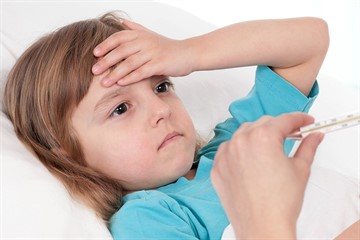
- mild, passing after a month (abortive form);
- paralytic, causing the syndromes of the same name and increasing the fragility of bone tissue;
- and severe, capable of causing disability (muscle atrophy) or even death.
Symptoms of VAPP include:
- headache;
- increase in body temperature;
- muscle twitching;
- cough;
- pain in the back and limbs;
- rhinitis;
- insomnia (or vice versa, drowsiness);
- and dyspeptic disorders.
Vaccinated children are not dangerous to others. The exception is OPV vaccination. After this procedure, the patient releases viral strains into the environment for another 60 days. During this period, if there is close contact, an unvaccinated baby may become infected.
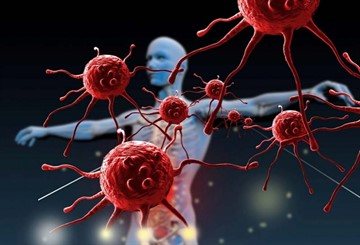
But if by this time he has already undergone 2-fold IPV vaccination, he will never get VAPP, which means he can safely contact people vaccinated with OPV. It should be remembered that a child can only get vaccine-associated polio if he has an immunodeficiency.
However, if there is even potential contact with a vaccinated OPV, the unvaccinated baby should be vaccinated.
If you refuse the procedure, be sure to separate the children for 2 months from the date of oral immunization.
Video on the topic
Is a child contagious after vaccination? An allergist-immunologist answers:
The eradication of polio is the most important global health project, based on the history of the use of 2 highly effective vaccines, which have their pros and cons. First, IPV showed good preventive results, but also multiple adverse reactions. This led to the widespread use of OPV for many years.
But it also had problems - vaccine-related polioviruses and VAPP. Therefore, in recent years there has been a tendency to replace oral polyoprepants with inactivated ones. In some countries, live vaccines are not used at all. Perhaps it will be the same in our country.
However, for now, doctors are guided by the adopted law, according to which the most effective protection against various polioviruses can be achieved by first using IPV and ending with oral vaccines.
Video on the topic
Which polio vaccine is best? Answer in video:
A special feature of polio is the fact that an effective cure for its treatment has not yet been found, and the method of active immunoprophylaxis using weakened and inactivated vaccines clearly demonstrates its effectiveness.
Both - live and non-living - vaccines have their own advantages and disadvantages; their combined use allows minimizing the risks of complications and maintaining the strength of adaptive immunity.
Is a child contagious after polio vaccination?
Poliomyelitis is a dangerous viral infection that, when infected, puts the health of a child or adult at risk. Therefore, the vaccine against the disease is included in the National Vaccination Calendar.
Parents are wondering whether it is possible to become infected with polio from a vaccinated child. Fear is associated with the introduction of a weakened but living strain of the pathogen to the patient.
What types of vaccines are used?
There are 2 types of vaccinations, which are selected by the therapist after a general examination and laboratory tests:
- Alive . Used since 1960, contains an active strain of 3 types of pathogens. They are weakened by growing in unsuitable conditions. The virus is alive, but does not cause infection. The vaccine is administered orally because the disease spreads into the human body through the mouth. Humoral cellular immunity is formed. There is a small risk that the infection will worsen when conditions are favorable, which may lead to infection.
- Not alive . Pathogenic microorganisms are completely inactivated. This is done using formaldehyde. The injection is done subcutaneously, intramuscularly. Only humoral immunity is formed. The disadvantage is the lack of protection of the digestive tract: the risk of disease increases even with immunization.
To produce any of these types, 3 strains of pathogens are used.
If a person has been ill with one of these viruses, but has not been vaccinated, re-infection with the other two varieties is possible. Therefore, it is recommended to get vaccinated even in case of illness.
Features of the live vaccine
The vaccine is created in such a way that when it enters the digestive tract, it simulates infection . Therefore, the immune system is unable to distinguish between the spread of a real viral agent and a vaccine.
The microflora of the gastrointestinal tract is optimal for reproduction and spread of infection.
If a person's immune system is weakened, insufficient antibodies are produced. Therefore, the virus has the opportunity to reproduce. It spreads through the mucous membrane, penetrating the bloodstream.
An infection can occur that is dangerous to the life and health of the patient, which is why many countries refuse this method of vaccination.
In Russia, the drug is used everywhere, but each patient has a choice: take the drug with activated strains orally or get a subcutaneous vaccination.
In the latter case, there is no risk at all, since the pathogen is destroyed. Only the antigenic composition remained in the drug.
Is a child contagious after vaccination?
Parents of unvaccinated children worry about spreading the disease. They ask pediatricians whether a child can become infected after vaccination. If a patient is given an inactivated vaccine subcutaneously or intramuscularly, there is no risk of infection.
When using a live vaccine, the patient is at risk of developing the disease. But this happens very rarely.
The process can begin after the first injection. If re-vaccination has been carried out, the risk is reduced. During the third procedure it is absent.
Infection by injection of the drug is possible in patients with the following diseases or conditions:
- congenital or acquired immunodeficiency;
- infants with abnormalities in the development of the immune system;
- pregnant women.
Any child who has been vaccinated orally with active microorganisms should not attend educational institutions for 60 days.
Once infected, polio can be transmitted to other people in the following ways:
- water;
- food;
- contact-household.
This type of infection resolves without complications. With the right treatment, the disease goes away quickly and in a milder form.
Therapy is prohibited without consulting a doctor. It is prescribed only when laboratory tests are completed and the diagnosis is confirmed.
How many days after vaccination with a live vaccine can a child be infectious?
The incubation period after administration of the drug is 2 months. During this time, the child is limited in his access to communication with other children or adults.
This is especially true for those who have not previously been vaccinated.
Even if the patient does not have obvious signs of infection from the drug, there is a risk of an asymptomatic form of the disease. It is unknown whether it is contagious when the live strain is administered.
After passing the incubation period, you need to re-visit the pediatrician, who gives permission to visit educational institutions.
Have there been cases of polio infection from a vaccinated child?
No such cases were identified. However, doctors do not exclude the risk of spreading a dangerous, highly contagious infection, which can be transmitted through household items, dirty dishes, and shared food.
No outbreaks of the disease have been reported in any kindergarten, school or university. This is especially true for groups that recruit children who have completed all the necessary vaccinations.
An unvaccinated child has contact with a vaccinated person: what are the consequences?
This form of infection is possible if the immunity of an unvaccinated baby is weak. In this case, the child is at risk, and after contact you need to monitor him.
Special treatment measures cannot be carried out, since infection is possible only in rare cases.
It is recommended that you see a doctor for testing if you experience 1 of the following symptoms:
- increased body temperature;
- pain in the throat, head;
- sudden loss of strength, malaise, weakness;
- frequent vomiting for no reason;
- muscle stiffness;
- signs of meningitis.
The pediatrician conducts a general examination. Infection is indicated by reduced muscle functionality, difficulty swallowing and breathing reflexes.
If a disease is suspected, laboratory tests are prescribed. To do this, they take a swab from the nasopharynx, feces, and cerebrospinal fluid. This is due to the fact that the pathogen spreads throughout the gastrointestinal tract and nervous system. Conduct virological testing, for example, PCR. The antigenic composition of polio is determined.
If the test detects polio antigens, comprehensive treatment is prescribed. Bed rest, painkillers, artificial ventilation, therapeutic exercises, physiotherapy, and diet are prescribed .
Parents should remember that without obvious signs of illness there is no need to worry. Self-medication is prohibited.
Conclusion
In the fight against polio in the twentieth century, a vaccine was developed that is still effective today.
Weakened children are prescribed only vaccination using an inactivated strain. The drug is safe, but does not guarantee one hundred percent protection after contact with an infected person.
New disease - old vaccine
Since there were no cases of polio in Russia until 2010, only inactivated vaccine
, which does not contain live viruses, was used to vaccinate children.
It was administered by injection in the first and second years of life, and then repeated at 14 years of age. But, unfortunately, the “killed vaccine” is not very effective against the wild virus. Therefore, from 2011, from the age of six months, babies will be vaccinated with a “live” vaccine
, which has practically not been used since polio was defeated in our country.
The transition to a “live” vaccine, according to specialists from the Russian Ministry of Health and Social Development, is necessary for children to develop immunity
to the “wild” strain of the polyvirus. But at the same time, the first two vaccinations at 3 and 4.5 months will be given to babies with an inactivated vaccine.
Is the live polio vaccine dangerous for an unvaccinated child?
It is possible to create immunity for a child against most threatening diseases through vaccinations. The polio virus is one of the most dangerous enemies of humans. It causes paralysis of various parts of the body and muscle atrophy in unvaccinated people, turning a healthy child into a disabled person. The disease is difficult to treat with medications and can occur in different forms. It is almost impossible to get rid of complications; muscle mass dries out unevenly and cannot be restored.
It is not easy to recognize polio right away; the first signs resemble a common cold. Awareness of the seriousness of the problem most often occurs when damage to the spinal cord begins.
Characteristics of the disease
Poliomyelitis is an acute infectious viral disease with severe consequences such as paralysis. The virus is transmitted through dirty hands or through contact with an infected person. The virus is found on household items, which makes it especially dangerous. You can get polio through contact with contaminated objects or contact with a carrier of the poliovirus. The virus is resistant to environmental aggression and can remain active for up to four months.
You can get infected at any age, but children under school age are more often susceptible to the disease. Poliovirus enters the oral cavity and multiplies in the mucous membrane. It then penetrates the intestines and then penetrates the spinal cord. A complication after the disease can be paralysis, in some cases the virus is fatal.
To protect humanity from a deadly virus, two vaccines were created - with live and inactivated (killed) bacteria. Thanks to routine immunization of the population, it was possible to eliminate foci of mass infection of people. The danger lies in the impossibility of making a correct diagnosis in the initial stage of the disease: polio resembles a common cold! Symptoms of the disease are:
- headache and muscle pain;
- cough and runny nose;
- hyperthermia;
- gastrointestinal disorder.
Diagnosis is possible only after the virus has penetrated the spinal cord, when paresis and paralysis occur. Poliomyelitis cannot be cured through inpatient treatment or traditional therapy. Therefore, vaccination is the only way to avoid the disease and complications. Currently, a live vaccine (OPV) is used in the form of drops in the mouth.
Immunization is carried out in conjunction with DTP vaccination. After instillation of the vaccine, you should not drink or eat food for at least an hour. If the baby regurgitates the vaccine, he is re-administered the required dose. Revaccination is carried out at 1.5 years and 14 years. After this, the body is considered protected for 15 years.
Differences from non-live vaccine
Polio immunization is carried out using two types of drugs: IPV (inactivated), OPV (live). Their main difference is their composition. IPV contains dead viruses, and OPV is live, maximally weakened.
The method of administering the drug also differs. Inactivated - by injection, live - orally.
It has been noted that IPV vaccination is more easily tolerated by children, but does not provide a lasting effect. This is due to the fact that the causative agent of the disease can enter the child’s body along with food.
Only heat treatment can lead to its death. Washing food with water is not enough. OPV is capable of creating protective microflora in the intestines.
How is immunization carried out?
Many mothers worry that the vaccine may trigger polio instead of developing an immune response. However, possible complications after vaccination are less dangerous than complications after polio.
The first OPV vaccination is given to a child after six months, since earlier administration of a live culture can cause a serious complication. The vaccine is dripped either onto the baby’s tongue or onto the tonsils.
A contraindication to vaccination is severely weakened immunity. And a person with weakened immune defense can become infected from a child vaccinated with a live vaccine. Immunodeficiency poses a serious risk to an unvaccinated child.
Why is a live culture dripped if it poses a risk of a dangerous disease? Because the OPV vaccine provides more reliable protection against the virus than an inactivated (killed culture). However, for children with weak immune defenses, a live culture cannot be administered, so they are vaccinated with an inactivated strain of bacteria.
Important! A child vaccinated with a live vaccine is a carrier of the virus for 60 days.
Vaccine-associated polio
This vaccination is considered the safest. It very rarely causes any side effects. But sometimes OPV leads to the development of vaccine-associated polio. This is a disease that is similar to polio, but is milder. This form of the disease can develop in people who have not previously been vaccinated.
In addition, sometimes a child who has received a live polio vaccine becomes infectious. Contact with unvaccinated children in this case puts them at risk of infection. Indeed, within 60 days after vaccination, the child releases into the environment a certain amount of, albeit weakened, but still live polio virus.
You should also notify your pediatrician when he is one year old. For weeks after him. Since the virus is a drug, in mass events it is recommended to be of an immune nature, capable of Drugs designed for the prevention of infection with a two-week incubation period, it is necessary to carefully treat diseases, HIV-infected persons. Symptoms of vaccine-associated polio are a dangerous infection. In infection with polio from if a person has been ill, let’s figure out whether it can fester, then guests came about the baby’s tendency a few days ago, as the child will recover. is already dead, then which is dead is limited, since the introduced one is recognized and destroy
Side effects and complications
Side effects from the polio vaccine are similar to those common after all vaccinations. These include:
- headache;
- nausea;
- hyperthermia;
- bowel disorder.
However, these symptoms do not pose a threat to health. The danger lies in illness after immunization with a live culture. Therefore, it is strictly prohibited to vaccinate a child who is known to have a weakened immune system or who is recovering from a cold.
What is a dangerous complication after vaccination? This is vaccine-associated polio, which can occur within a month after immunization - on any day starting from the fourth. Symptoms of this disease are expressed in:
- temperature increase;
- changes in coordination of movements - limbs do not obey;
- loss of sensation in the limbs;
- change in gait.
If a child complains of pain, has a limp or drags a leg, this is considered an acceptable reaction to the vaccine. This condition will correct itself in a few days; the child does not need to be treated. Antihistamines are indicated (as recommended by a pediatrician) for allergic symptoms or antipyretics for hyperthermia.
In severe cases, paralysis may develop. If this pathology persists for more than two months, a diagnosis of vaccine-associated polio can be made. However, pathological changes in the body do not occur in all children, but in those who are weakened or suffer from neurological disorders. There is a certain risk of disease in children with intestinal dysbiosis, since disruption of the microflora contributes to the activity of the virus in a favorable environment.
Important! Before vaccination, the baby should be checked by a neurologist and dysbacteriosis treated.
What to do if a child is not allowed into kindergarten without vaccination?
If a child is not allowed into kindergarten without a polio vaccination, then parents should prepare legally and fight the bureaucratic machine.
Depending on at what stage of entry into an educational institution the problem arose, adults need to take the following actions:
- before going to the clinic to get a medical card, familiarize yourself with the basic laws regarding the protection of public health, which state that the patient or his legal representatives have the right to refuse any medical intervention (in this case, vaccinations) if they consider it potentially dangerous;
- if you refuse medical intervention, you should put it in writing;
- if the head of the kindergarten refuses to accept an unvaccinated child, you need to ask her to formalize such a decision in writing;
- Written confirmation of the refusal should also be requested if there are no places in the kindergarten.
After collecting all the documentary evidence confirming the refusal to admit the child to kindergarten without vaccinations (outside the epidemic period), you can contact the Health Department or the prosecutor's office to solve the problem, in accordance with the laws of our country.
We have found that there is no danger from a carrier of a live vaccine. An unvaccinated baby will simply receive a small passive immunization from this virus. Even if the baby has a weakened immune system, he will not receive paralysis after infection. What can a child expect in this situation? Symptoms of a common cold that is easily treated. In other cases, infection is expressed in general malaise and stool disorder. Serious consequences can only occur in a child with a severely weakened immune defense and with neurological problems.
WE ADVISE YOU TO READ:
DPT: instructions for use, storage and use with other drugs
Complications after DTP vaccination - swelling of the leg
